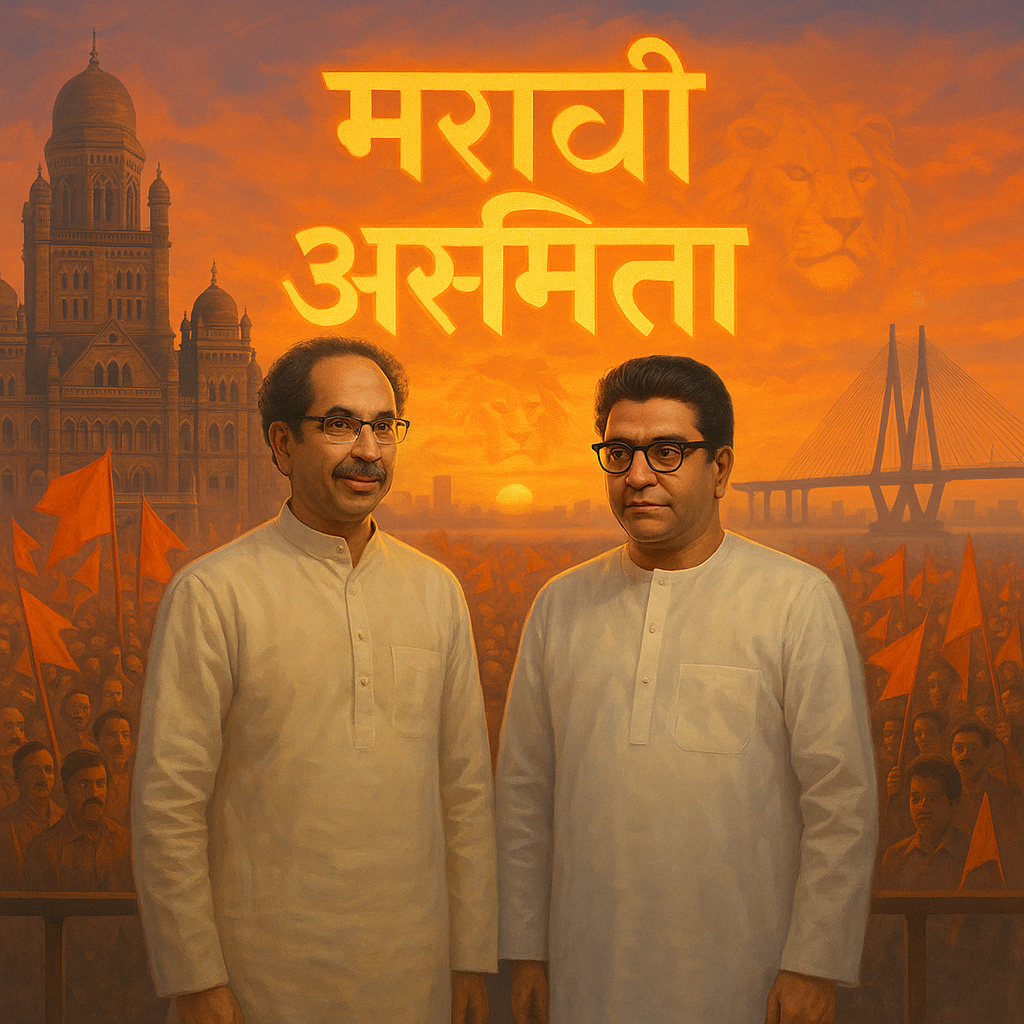To understand the magnitude of the Thackeray Comeback 2025, it’s crucial to revisit the genesis of their split. When Bal Thackeray appointed his son Uddhav as the working president of Shiv Sena in 2003, Raj felt sidelined. This rift only widened after Bal Thackeray’s demise in 2012, prompting Raj to form the MNS in 2006.
The two leaders competed for the same Marathi vote bank in subsequent elections, fragmenting their strength and allowing rivals—particularly the BJP—to capitalize. But the recent realignment signals a strategic recalibration, not just for survival, but for resurgence.
A Do-or-Die BMC Battle
The Thackeray Comeback 2025 is being shaped by an urgent political necessity. In the 2024 Maharashtra Assembly elections, the BJP emerged dominant with 132 of 148 seats contested. In contrast, Uddhav’s Shiv Sena (UBT), weakened by Eknath Shinde’s defection, was reduced to just 20 MLAs. Raj Thackeray’s MNS failed to open its account.
The upcoming Brihanmumbai Municipal Corporation (BMC) elections—expected later this year—are therefore critical. For the Thackerays, this election isn’t just another poll; it’s an existential test. Both camps understand that uniting may be the only path to revival, hence the urgency behind the Thackeray Comeback 2025.
BJP’s Cautious Watch
The BJP, meanwhile, has adopted a wait-and-watch stance. Party strategists acknowledge that if the Thackeray Comeback 2025 successfully consolidates the Marathi vote—roughly 30% to 35% in Mumbai—it could dent both Shinde’s faction and the BJP’s prospects.
However, BJP leaders remain confident that the division between Marathi and non-Marathi voters could still work to their advantage. With a robust voter base among Gujaratis and North Indians, also comprising 30% to 35%, the BJP is banking on ethnic polarization to retain power in Mumbai.
Strategic Patience in Play
Senior leaders from both Shiv Sena (UBT) and MNS are playing the long game. A top Shiv Sena (UBT) leader mentioned anonymously that while Uddhav is keen on a full political alliance, “any hasty move could be detrimental.” The MNS leadership echoed similar views, stressing that politics demands patience and that any steps forward would be guided by the aspirations of the Marathi Manoos.
Clearly, the Thackeray Comeback 2025 is being carefully calibrated. The cousins are wary of rushing into a formal alliance without consolidating their core vote base.
A Rallying Cry in April
The seeds of the Thackeray Comeback 2025 were sown in April when Shiv Sena (UBT) released a poster declaring, “The time has come to unite for Mumbai and Maharashtra. Shiv Sainiks are ready to defend Marathi pride.” This public outreach laid the emotional foundation for their eventual public reunion.
In an interview with filmmaker Mahesh Manjrekar, Raj Thackeray emphasized, “The so-called disputes between Uddhav and me were minor. Maharashtra is much bigger than that.” Uddhav responded with equal warmth at a party function, saying, “I am ready to keep aside minor differences for Maharashtra’s interest.”
This public thaw between the cousins fueled the momentum behind the Thackeray Comeback 2025.
Can Marathi Pride Still Win Votes?
The million-dollar question is whether Marathi identity politics still holds electoral value. Over the years, both Uddhav and Raj have tried to expand beyond the Marathi plank, targeting broader constituencies. However, without significant returns, they now seem to be returning to their ideological roots.
The Thackeray Comeback 2025 is a calculated gamble. By rekindling the emotional bond with the sons of the soil, they are trying to revive a narrative that once defined Mumbai politics. But times have changed. Voter aspirations have evolved. The challenge lies in not just invoking identity but showing tangible disadvantages that Marathi citizens face today.
Fadnavis Pushes Back
Chief Minister Devendra Fadnavis has responded with caution. His government, already under scrutiny for introducing Hindi as the third language in primary schools, issued a stern warning. “Marathi pride is welcome,” he said, “but it does not give anyone the right to intimidate or assault those who don’t speak the language.”
This statement reveals the BJP’s attempt to balance cultural respect with law-and-order priorities. It’s also a reminder that the Thackeray Comeback 2025 could reignite volatile sentiments that need careful handling.
A Critical Juncture
As the Thackeray Comeback 2025 gains momentum, the upcoming BMC polls will serve as its first litmus test. Can the united front of Shiv Sena (UBT) and MNS reclaim the heart of Mumbai? Or will demographic shifts, party loyalty erosion, and BJP’s consolidated base derail the effort?
For now, the Thackerays have the spotlight. Whether they can translate symbolism into seats remains the story to watch.
Conclusion
The Thackeray Comeback 2025 is more than a reunion—it’s a strategic reset rooted in cultural pride, political survival, and legacy restoration. The Marathi Manoos sentiment may no longer be as dominant as it once was, but if channeled effectively, it could reshape the balance of power in Maharashtra. All eyes are now on how this political drama unfolds—cautiously choreographed and emotionally charged, just like the city it aims to win back.
